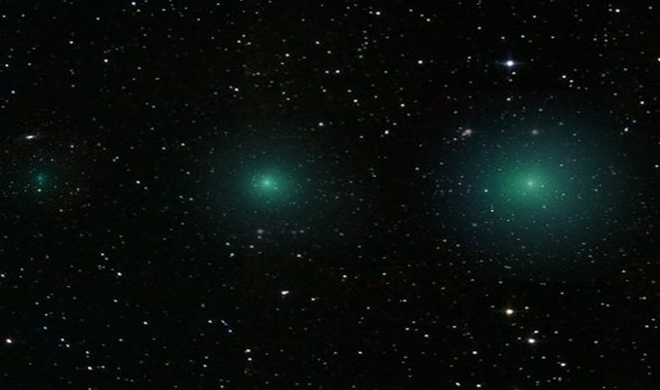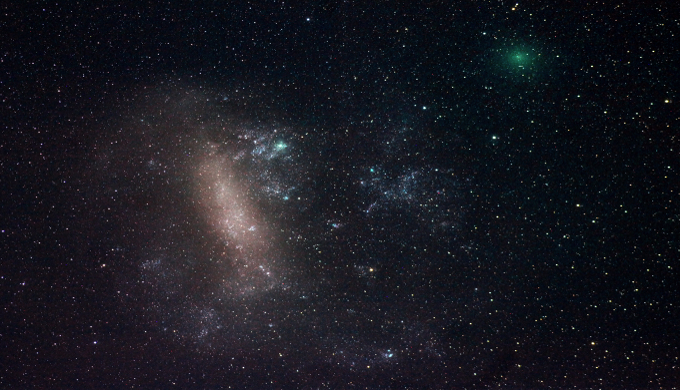 Justin Tilbrook (Astronomical Society of South Australia)
Justin Tilbrook (Astronomical Society of South Australia)
Local News
Two Comets Are Headed Our Way
On Monday, March 21, 2016, the first of two emerald green comets, 252P/LINEAR, will be flying extremely close to the Earth’s orbit. The second, and considerably smaller, comet, P/2016 BA14, will make a pass by even closer on Tuesday, March 22, 2016. 252P/LINEAR will be visible to the naked eye in the southern hemisphere, but will we be able to see it here in Texas? Most likely, with a little help.
 Photo: Justin Tilbrook (Astronomical Society of South Australia)
Photo: Justin Tilbrook (Astronomical Society of South Australia)
Flying a mere 3.3 million miles from the Earth, 252P/LINEAR will be visible to stargazing Texans if they use a pair of binoculars, but not until a little later in March after the comet takes a northward turn, according to Sky & Telescope. However, viewers of this comet’s little brother will need the help of a telescope in order to see it as it flies closer yet at 2.2. million miles from Earth. This will be the closest any comet has come to the Earth since Lexell’s Comet in 1770 and IRAS-Araki-Alcock in 1983. Lexell’s Comet holds the record at roughly 1.3 million miles away, while IRAS-Araki-Alcock, having passed 2.9 million miles from Earth, will soon be booted from its second place spot.
252P was discovered on April 7, 2000 by the Massachusetts Institute of Technology’s Lincoln Near Earth Asteroid Research (LINEAR) research. However, BA14 wasn’t discovered until January 21st of this year and was originally thought to be an asteroid. It wasn’t until the astronomers Michael Kelley and Matthew Knight from the University of Maryland and the Lowell Observatory team joined forces that a tail was sighted using the Discovery Channel Telescope. The two comets are traveling a very similar orbit. According to Nasa’s News Release, it is believed BA14 is a fragment of the much larger 252P comet.
 Photo: NASA Jet Propulsion Laboratory
Photo: NASA Jet Propulsion Laboratory
“Comet P/2016 BA14 is possibly a fragment of 252P/LINEAR. The two could be related because their orbits are so remarkably similar,” said Paul Chodas, manager of NASA’s Center of NEO Studies (CNEOS) at the Jet Propulsion Laboratory in Pasadena, California. “We know comets are relatively fragile things, as in 1993 when comet Shoemaker-Levy 9 was discovered and its pieces linked to a flyby of Jupiter. Perhaps during a previous pass through the inner-solar system, or during a distant flyby of Jupiter, a chunk that we now know of as BA14 might have broken off of 252P.”
Will this mean that Armageddon is on the horizon? No, but it does mean that we will be able to see a once in a lifetime event of two close-cutting comets traveling a similar orbit. “March 22 will be the closest comet P/2016 BA14 gets to us for at least the next 150 years,” said Chodas. “Comet P/2016 BA14 is not a threat. Instead, it is an excellent opportunity for scientific advancement on the study of comets.”

